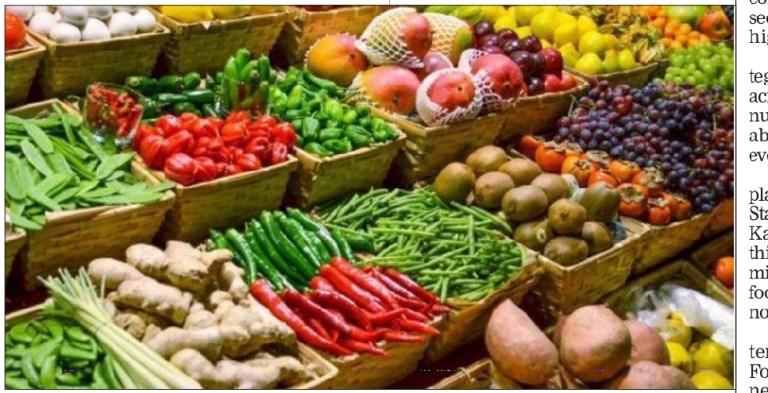Despite Nigeria’s agricultural potential, its rapidly growing population and recent economic shifts still pose critical challenges on its food production capabilities.
Barriers such as inflated operational costs, climate change, resource degradation, limited access to technology, and post-harvest losses, significantly impact both food availability and nutritional quality across the nation.
These challenges, both naturally occurring and macroeconomically driven, create significant gaps in Nigeria’s agricultural value chain that require innovative interventions to reduce their impact and develop sustainable solutions.
Despite Nigeria’s agricultural potential, its rapidly growing population and recent economic shifts still pose critical challenges on its food production capabilities.
Barriers such as inflated operational costs, climate change, resource degradation, limited access to technology, and post-harvest losses, significantly impact both food availability and nutritional quality across the nation.
These challenges, both naturally occurring and macroeconomically driven, create significant gaps in Nigeria’s agricultural value chain that require innovative interventions to reduce their impact and develop sustainable solutions.
The disparity between Nigeria’s resources and productivity also influences the quality of food available in the country and the nutritional value of produce citizens have access to.
Food production
According to the Global Nutrition Report, Nigeria has shown limited progress towards achieving the diet-related non-communicable disease (NCD) targets as malnutrition and obesity still affect significant percentages of the population.
However, variables influencing Nigeria’s global nutrition targets and wellbeing – i.e. food security and control over nutritional value can be developed with a focused approach to local production.
The economic and human incentives associated with addressing Nigeria’s food production challenges necessitate the integration of innovation. To unlock the full potential of the value chain, there is a need for a culture of best practices that streamlines end to end production.
Agricultural producers and farmers often seek out holistic approaches that combine traditional farming practices with technological advancements but are limited by the lack of access to modern farming techniques and equipment to drive productivity and sustain outputs.
In the dairy industry, where the nutritional value of outputs is essential, some farmers operate with poor infrastructure and animal welfare that slows down daily production and proper preservation of outputs.
Technology driven
With the proper investments and access to technology, issues such as low agricultural output and post-production losses due to low-quality inputs and inadequate storage infrastructure can be mitigated.
When analysing the impact of technology in practical and costefficient solutions for farmers, private sector players like Arla Foods have prioritised the integration of modern technology around animal welfare and local milk production.
Achieving high quality and nutritional dairy products involves maximising dairy production from each cow and tailoring processes to ensure their well-being.
At the Arla farm in Damau, Kaduna State, cows are monitored with automatic health monitoring systems that monitor the cows’ movements, heat patterns to determine peak insemination periods, and other comprehensive health variables that maintain the health, fertility and productivity of cows.
Through this innovative system, farmers can identify abnormalities, behavioral shifts, and eating patterns in real-time, in order to provide swift response and enhance animal welfare.
Leveraging innovative tools like this are integral catalysts for transforming the dairy sector, and the agricultural industry, as healthy and well managed inputs yield healthy, nutrition-rich.
Enhancing local production
Beyond animal welfare, innovation is being utilised to produce high-yielding dairy breeds through specialized breeding. Faced with the natural imbalance between the number of bull and heifer calves being born and raised on farms (52 :48 ratio of male (bull) calves to female (heifer) calves), there are a lesser percentage of multiparous and lactating cows in dairy herds that can be leveraged for production.
Dairy companies like Arla harness science-based interventions by partnering with specialised breeding companies like Viking Genetics to gain “sexed semen” from their finest bulls for the purpose of gaining female calves from its pregnant heifers.
When analysing the impact of technology in practical and costefficient solutions for farmers, private sector players like Arla Foods have prioritised the integration of modern technology around animal welfare and local milk production.
Achieving high quality and nutritional dairy products involves maximising dairy production from each cow and tailoring processes to ensure their well-being.
At the Arla farm in Damau, Kaduna State, cows are monitored with automatic health monitoring systems that monitor the cows’ movements, heat patterns to determine peak insemination periods, and other comprehensive health variables that maintain the health, fertility and productivity of cows.
Through this innovative system, farmers can identify abnormalities, behavioral shifts, and eating patterns in real-time, in order to provide swift response and enhance animal welfare.
Leveraging innovative tools like this are integral catalysts for transforming the dairy sector, and the agricultural industry, as healthy and well managed inputs yield healthy, nutrition-rich.
Enhancing local production
Beyond animal welfare, innovation is being utilised to produce high-yielding dairy breeds through specialized breeding. Faced with the natural imbalance between the number of bull and heifer calves being born and raised on farms (52 :48 ratio of male (bull) calves to female (heifer) calves), there are a lesser percentage of multiparous and lactating cows in dairy herds that can be leveraged for production.
Dairy companies like Arla harness science-based interventions by partnering with specialised breeding companies like Viking Genetics to gain “sexed semen” from their finest bulls for the purpose of gaining female calves from its pregnant heifers.
This innovative breeding process provides carefully selected semen to achieve over 90 per cent female long-lasting calves that help drive production, food security and reduce climate impact.
Improved access
Despite these enhanced processes, the availability of innovative resources does not often translate to accessibility for Nigerian dairy communities.
Gaps driven by marginal capital, digital inexperience, and outdated processes limit adoption and technological know-how of dairy farmers.
In managing such gaps, publicprivate partnerships, as well as programs that invest in proper infrastructure to improve farmers’ access and knowledge of modern tools are vital components.
Investments geared toward improving milk quality and processing, maintaining strict hygiene protocol, providing affordable milk cooling equipment and other enhancements across the value chain are a crucial part of boosting local production.
Outside of cutting-edge integrations, at the local level, there is an increasing need for agricultural research that spotlights how new technologies and practices can improve productivity and nutritional value of dairy outputs in the market.
Knowledge-sharing opportunities and extension services can be used to properly integrate modern technology in dairy communities and drive continuous innovation.








